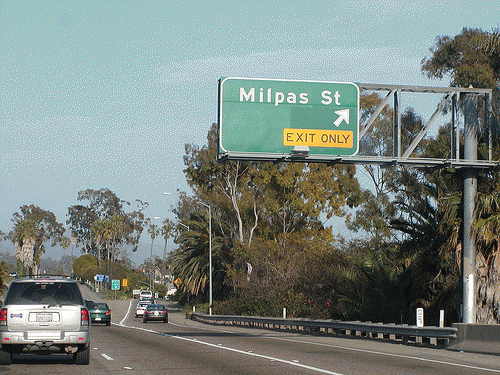Plans for an Eastside Business Improvement District (EBID) were submitted by the Milpas Community Association (MCA) to the Santa Barbara city council this past November calling for the taxation of businesses along Milpas Street and the Eastside based on an "assessment" of their business category. The ostensible purpose of the "assessment" (read taxes) would be to fund improvements in the area. The amount paid would determine the proportion of each business owner's voice in the decision-making process for the EBID with hotels paying a bigger tax and enjoying a greater voice while retail businesses would pay a smaller tax and have a lesser voice.
If that sounds suspiciously like the whole "money is speech" style of democracy of the oligarchs who happen to have a lot of it here in sunny Santa Barbara, it gets better: The MCA seeks to appoint itself the administrator of the taxes it would impose on Milpas.
When you consider that the MCA supported the gang injunction, a measure whose supporters frequently referred to the alleged Mexican mafia's taxation of Eastside businesses, you have to ask yourself -- who's zooming who?
The MCA aggressively backed the injunction even to the point of misrepresenting information presented by the activists who opposed it. Arguing that the injunction would curtail the activities of "problem youth" in predominately Latino neighborhoods, the MCA characterized the Eastside as a "gang war zone" though this never stopped it from pursuing its business interests there.
So given the fact that the MCA has had a less than sterling record with its Latino neighbors on the Eastside, it is worth examining the motives of the MCA for its proposed "improvements" to the neighborhood.
It might be asked; what else do the defeated gang injunction and the proposed EBID share in common?
For starters, they both demarcate largely Latino communities for "improvements" that include increased police presence and greater cleanliness. Rather significantly, backers of both measures made next to no effort to engage in dialog with the local Latino community prior to making their proposals, an oversight that in the case of the gang injunction, cost it dearly.
But maybe most importantly, both measures problematize a working-class community of color in a way that raises questions about the race and class subtext that lies at the heart of the MCA's plans for the Eastside.
According to the agenda report of the city council on November 11th, the MCA "contacted the city to express an interest in the possibility of creating a business improvement district that would formalize the identity of the Milpas/Eastside area."
Formalize the identity of the Eastside? Is the MCA suggesting that the Eastside lacks an identity? If the MCA thinks so, then it is disregarding the fact that this neighborhood has its own well-established identity in the Mexican community that provide the rich historical heritage and cultural traditions of Santa Barbara.
So how exactly does the MCA propose to "formalize the identity of the Milpas/Eastside area?" A clue may be found in its enumeration of a plan that outlines 1) Beautification, Cleanliness and Safety, 2) Government Relations, 3) Promotion, and 4) Special Events.
Words like "beautification, cleanliness, and safety" get bandied about with great frequency in discussions of low-income and minority communities and should be decoded for their meaning; for at their heart lies an attitude of sniffing disapproval that views these neighborhoods as less than beautiful, sanitary, safe, or law-abiding.
So-called improvements to the Eastside, whether in the form of the gang injunction or the EBID, focus a great deal of attention on graffiti abatement and increased police patrols thus opening the door for the control and surveillancing that is the precursor to gentrification.
In the final analysis, the not-so gentle oligarchs who stand to profit from the misery of those less-moneyed unfortunates pushed out of their homes by gentrification is an accomplishment of fraud over force that does not mitigate its depredations in the least.
Again, you might ask yourself -- who's zooming who here?






